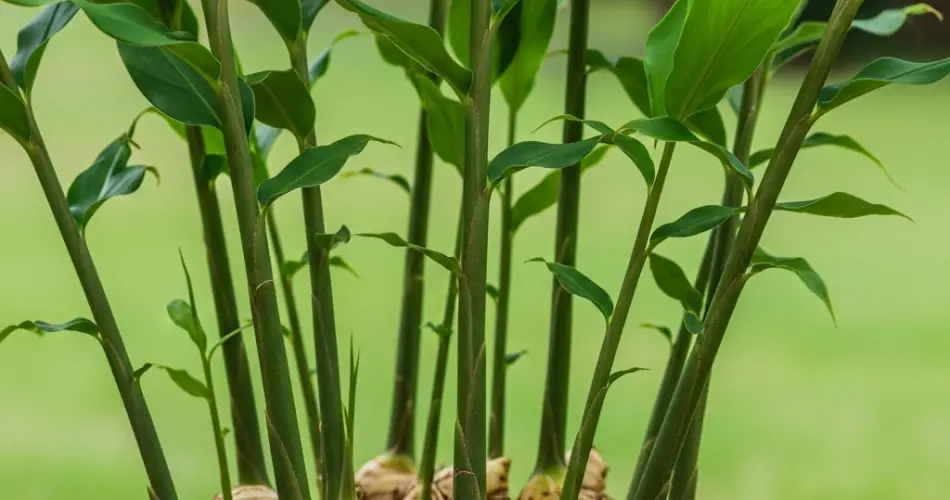Ginger is not only a flavorful and aromatic addition to many dishes but also a powerful natural remedy for digestion, inflammation, and colds. While it might seem like an exotic crop best left to professional farmers, growing and harvesting ginger at home is surprisingly easy—even if you’ve never gardened before. With the right techniques, you can enjoy a steady supply of fresh ginger straight from your backyard, balcony, or even a large pot indoors.
Here’s a hassle-free guide to harvesting ginger effortlessly in your own space.
Why Grow Ginger at Home?
Ginger is a rhizome—a type of underground stem—that thrives in warm, humid conditions with indirect light. It doesn’t require a lot of attention, and once established, it can grow continuously with minimal effort. Freshly harvested ginger from your garden is more aromatic and flavorful than store-bought varieties and is free from pesticides or chemical treatments.
Step 1: Start with a Healthy Ginger Root
The first step in growing ginger is selecting a good-quality rhizome. Choose a fresh, plump ginger root with several “eyes” or growth buds. These are small, round bumps on the surface of the rhizome, which will sprout into shoots. You can often find suitable ginger roots at local grocery stores or organic markets.
If possible, soak the rhizome in warm water overnight to encourage sprouting and remove any growth inhibitors.
Step 2: Choose the Right Container or Garden Spot
Ginger prefers loose, well-draining soil that stays moist but not soggy. If planting in the backyard, pick a spot with filtered sunlight or light shade. Ginger does not do well in full sun, especially in very hot climates.
If you’re using containers, choose wide, shallow pots that allow the rhizomes to spread horizontally. Make sure there are drainage holes at the bottom.
Fill the pot or garden bed with a mix of compost, sand, and potting soil to ensure proper drainage and nutrients.
Step 3: Plant and Maintain with Minimal Fuss
Plant the ginger rhizome about 2 inches deep with the buds facing upward. Cover lightly with soil and water gently. Keep the soil moist but avoid overwatering, which can lead to rot.
Ginger grows slowly, so be patient. Within 2 to 3 weeks, you’ll see green shoots emerge from the soil. Keep the plant in a warm, humid location and mist the leaves occasionally if the air is dry.
No complex fertilizing schedule is necessary. Feed your ginger every few weeks with compost tea, banana peel water, or diluted kitchen-scrap fertilizer to encourage healthy growth.
Step 4: How to Tell When Ginger Is Ready to Harvest
Ginger takes about 8 to 10 months to mature fully, but you can begin harvesting small portions after about 4 to 5 months. At this stage, the rhizomes will be tender and have a milder flavor—perfect for cooking.
Look for signs that the plant is nearing harvest:
-
The leaves will begin to turn yellow and dry.
-
The stems may start to droop.
-
The overall plant will slow its growth.
These are natural indicators that the rhizomes have matured underground.
Step 5: Harvesting Without Digging Up the Whole Plant
One of the best things about ginger is that it can be harvested partially. Instead of uprooting the entire plant, gently dig around the base and remove a portion of the rhizome. Cover the remaining root with soil and water it again. This allows the plant to continue growing and producing more ginger for future harvests.
Use a small trowel or even your hands to gently loosen the soil. The ginger will come up easily without resistance if it’s ready. Rinse off the harvested portion, and it’s ready to be used fresh or stored.
Step 6: Store and Use Your Fresh Ginger
After harvesting, let the ginger air dry for a day. Store it in a cool, dry place or refrigerate it wrapped in a paper towel and sealed in a bag for longer shelf life. You can also freeze ginger—whole, sliced, or grated—for future use.
Aside from cooking, ginger can be steeped in tea, added to smoothies, or used in natural remedies.
Bonus Tip: Regrow Ginger from Scraps
Don’t discard leftover rhizome pieces. You can plant them again and repeat the cycle. As long as a piece has at least one growth bud, it can be regrown with the same simple steps.
This creates a self-sustaining ginger supply right at home.
Final Thoughts
Harvesting ginger in your backyard doesn’t have to be a time-consuming or intimidating process. With a few pieces of store-bought ginger, a container or patch of soil, and some regular watering, you can grow and enjoy your own fresh, chemical-free ginger with minimal effort.
Whether you’re a beginner or someone who just wants a low-maintenance crop, ginger is a perfect choice for hassle-free gardening and a rewarding harvest.



